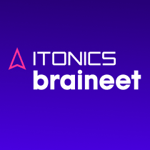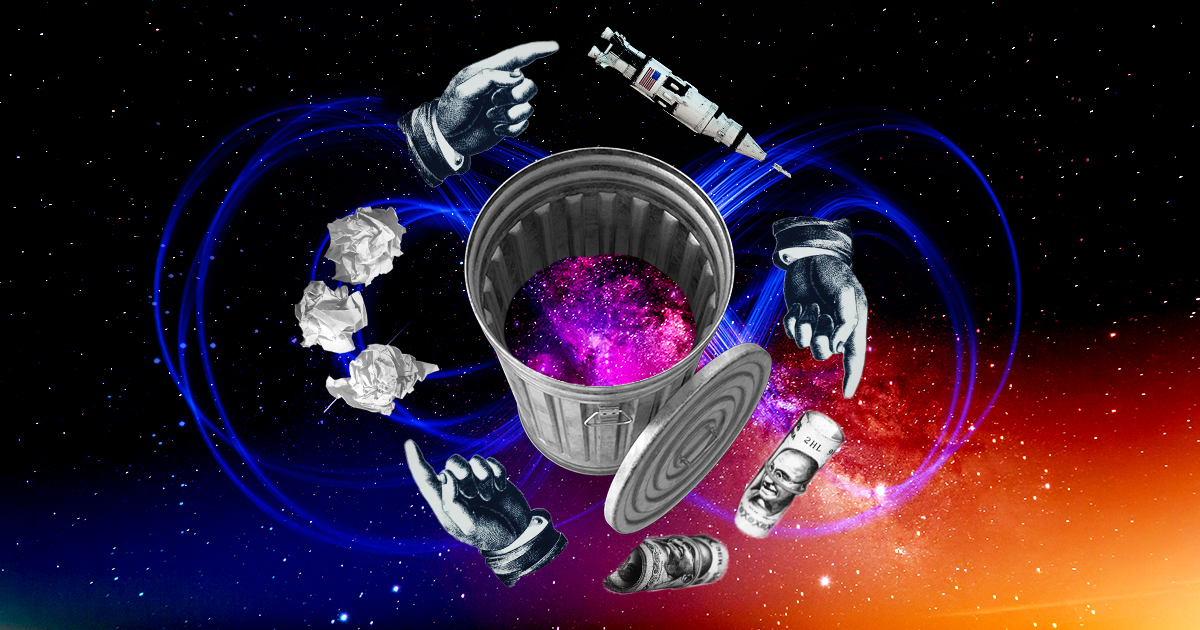While consumers increasingly demand engagement with businesses based on values rather than value, the physical and material risk of climate change is fast becoming a reality for organizations. To meet these new demands and mitigate supply chain disruptions, organizations need to optimize their value chains to be more efficient and environmentally conscious.
With renewed ambitions set out to achieve sustainable outcomes—and ultimately, net positivity—it is imperative that businesses change their mindsets from ‘value chain’ to ‘value lifecycle’.
This requires rethinking supply chains from the bottom up to align with the targets set out in the UN Sustainable Development Goals (SDGs) and build a circular economy around their products; strengthening product and service delivery ecosystems across markets.
- To gain this new perspective, innovation teams must first understand the core principles of generating new value within the product lifecycle.
- Applying this understanding, teams must map out and assess the entire value chain—from “cradle to grave” encompassing the full product lifecycle—including congruent business ecosystems, and all relevant stakeholders.
- Considering the full systems and their parts, teams must reevaluate how the issues intersect and evolve over time with the use of a company-specific dynamic materiality matrix.
- With this view, teams can identify points of intervention and optimization by looking to overlaps in interest.
- By considering these leverage points, decisive action can be taken to prioritize the initiatives that demonstrate the highest synergistic innovation potential and shared value.
Understanding Core Principles of Generating New Value within the Product Lifecycle
The mindset shift from ‘value chain’ to ‘value lifecycle’ looks beyond current take-make-waste extractive industrial systems to redefine best practice and value creation. In this way, the core principles of generating new value within the product lifecycle are inextricable from those that govern the design of both lean systems and circular economies.
Lean systems are defined by the following principles:
- Add Value:
Identify and create products or services that add value, ensuring customer satisfaction. - Streamline:
Optimize workflow by eliminating the non-value steps and create a value stream. - Establish Flow: Eliminate steps in the workflow that potentially cause interruption, backflow, delay, or destruction.
- Supply on Demand:
Produce only based on demand to ensure waste is minimized. - Strive for Perfection:
Continually remove successive layers of waste in the value cycle as they are uncovered.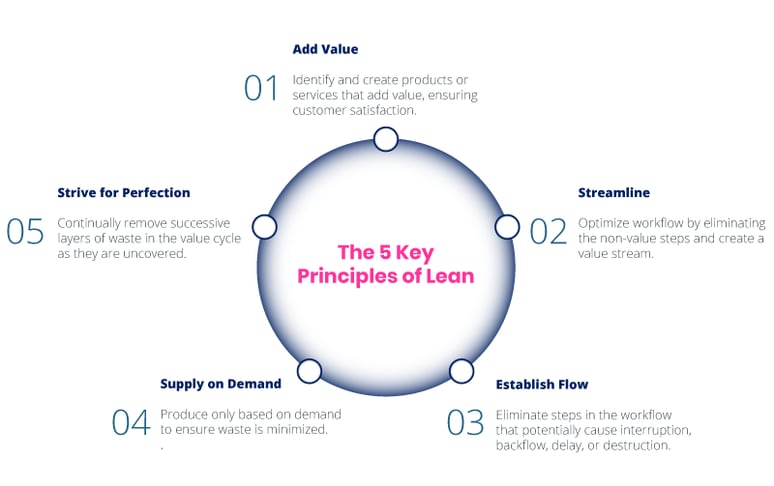
As advocated by The Ellen MacArthur Institute, the following three principles are the foundations of circular economies:
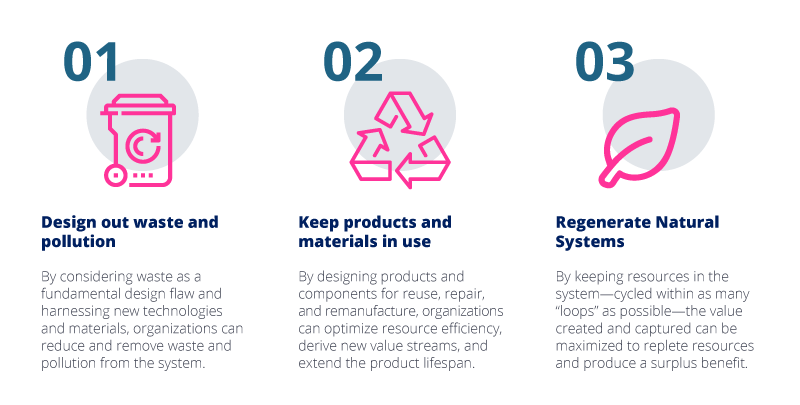
Map Out and Assess the Entire Value Chain—from “Cradle to Grave” Encompassing the Full Product Lifecycle.
Many firms are now accustomed to collaborating with suppliers and partner networks in clarifying their vision and objectives. However, the sustainability agenda requires that executives broaden and deepen those links to extend to the entire value chain, taking ownership of impact even post-consumption.
To avoid reactive solutions that undermine the business case for sustainable practices, it is critical to understand where you are; assess existing capabilities and the impact of current initiatives within the greater system to establish a strategic direction—a starting point for this purposeful journey.
By deeply understanding the effectiveness of current governance structures and strategies, organizations can start internal and external dialogues to elevate the strategic climate debate and drive holistic decision-making that includes careful consideration of the links between business strategy and impact within the systems of change.
Setting the cornerstone for informed strategy development, this phase helps organizations avoid ineffective and expensive initiatives, building on existing capabilities and strengthening the case for sustainable solutions.
This can be done by mapping current initiatives across the value chain, using tools such as the ITONICS radar, portfolio mapping, and roadmapping tools. Connecting the dots, this will serve to highlight gaps, risks, and intersection points where stakeholder interests coincide with revenue models and potential opportunities.
Reevaluate how the Issues Intersect and Evolve over Time with the Use of a Company-Specific Dynamic Materiality Matrix.
Considering the full systems and their parts, teams must reevaluate how the issues and intersections evolve over time. These insights should inform a company-specific dynamic materiality matrix; where one axis demonstrates how important an issue is to the company from a value creation perspective, while the other axis indicates how important this issue is to collective stakeholder values sentiment.
Issues may evolve slowly, as with climate change and gender diversity, or more quickly, as with plastics in the oceans. Most ESG issues are industry-specific, however, when events such as the COVID-19 pandemic unfold within a very concentrated period of time, the issue can become material to every company in every industry, for benefit or loss.
An example of such is illustrated by the chart below which shows the level of Danone’s engagement on the x-axis, with collective stakeholder values sentiment at the y-axis:
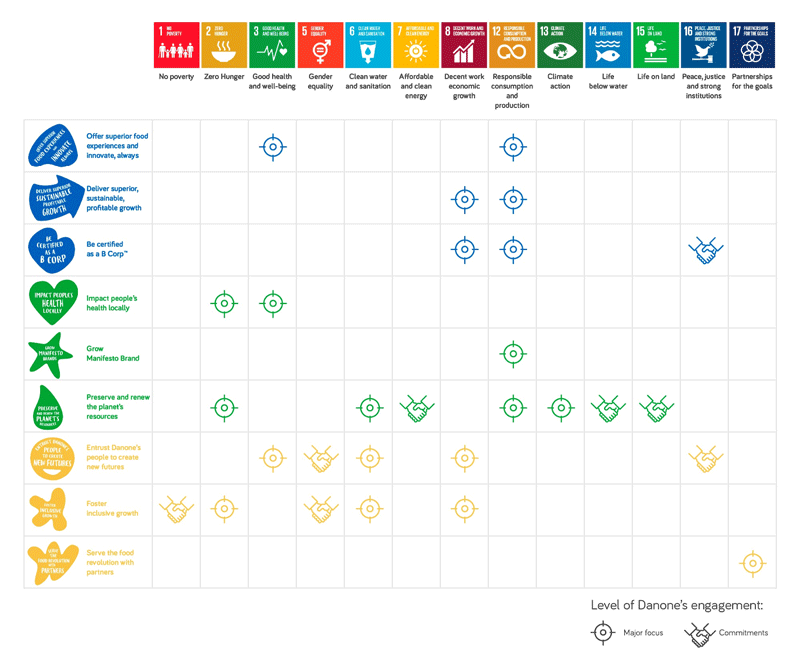
Source: Danone
Such a tool serves to demonstrate the growth in evidence of why an issue or initiative should be prioritized, which puts pressure on companies to address the concern lest they forego consumer and employee interest. As a result, investors who comprehend the profitability implications are compelled to become more active in their engagement on the prioritized issue.
Identify Points of Intervention and Optimization by Looking to Overlaps in Interest.
Overlaps in interest and materiality represent leverage points that demonstrate synergistic innovation potential and shared value.
Following the above example, Danone has made use of such to select the SDGs to which its organization will commit. This took into account their materiality matrix which highlights the most significant sustainability topics for their stakeholders and business performance. The material aspects identified emphasize the way Danone will significantly contribute to the following SDGs on which its activities have a moderate impact.
- SDG 1 No Poverty, by focusing on the reduction of the poor and those living in vulnerable situations, namely through investments in the following four funds: Danone Communities, the Danone Ecosystem Fund, the Livelihood Carbon Funds, and the Livelihood Funds for Family Farming;
- SDG 14 Life Below Water, by preventing and significantly reducing marine pollution, notably through commitments to circular economy and a partnership with the Ellen MacArthur Foundation;
- SDG 15 Life On Land, by combating deforestation and degraded land and soil;
- SDG 16 Peace, Justice and Strong Institutions by fighting against corruption and bribery in all their forms.
Danone also took into consideration the major initiatives the organization supports, such as the HeForShe and the RE100 Initiatives. They respectively show how Danone intends to contribute further to:
- SDG 5 Gender Equality
- SDG 7 Affordable and Clean Energy
Finally, Danone also contributes to the following SDGs on which its activities have an indirect impact:
- SDG 4 Quality Education, through providing access to affordable and quality training for employees;
- SDG 9 Industry, Innovation and Infrastructure, by developing capital expenditure in developing markets and innovations for sustainable development;
- SDG 10 Reduced Inequalities, namely through increasing the number of employees benefiting from healthcare coverage through the Dan’Cares program and by increasing the number of women executives or the number of executives representing emerging markets;
- SDG 11 Sustainable Cities and Communities, by reducing the impact on air quality and enhancing waste management.
Prioritize the Initiatives that Demonstrate the Highest Synergistic Innovation Potential and Shared Value
The systemic nature of sustainability issues and, by extension, solutions require an integrated, holistic approach. And beyond commitment lies action.
Organizations aiming to align their efforts internally, as well as with sustainability indicators such as the Sustainable Development Goals and ESG criteria, need transparency and the vantage of the big picture. Teams need the ability to zoom in to specific innovation pipelines—extract insights, allocate resources, and plan timelines.
Having the right tools to manage innovations, technologies, projects, and opportunities is vital to acting on your organization’s sustainability strategy in an increasingly uncertain and dynamic world. After all, what you can’t manage, you cannot change.
Get started by exploring the ITONICS Sustainability Radar to identify the trends, technologies, and risks that are relevant to your organization, customers, and future development. Discover the opportunities for sustainable innovation that lie within future scenarios through the application of strategic foresight.
The ITONICS Innovation OS allows you to build internal consensus and collaboration at all levels by connecting projects to an agile digital roadmap and therefore make better, informed decisions that support a more sustainable and prosperous future.
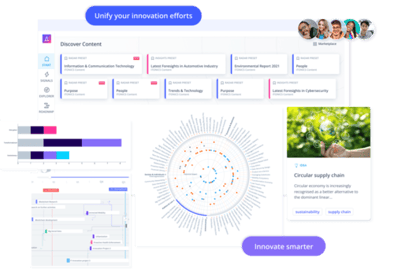
See the ITONICS Innovation OS in action





